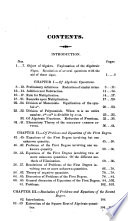 | Bourdon (M., Louis Pierre Marie) - Algebra - 1831 - 446 pages
...PERMANENCES. 331 . Consequence. When the roots of an equation are all real, the number of positive roots is equal to the number of variations, and the number...negative roots is equal to the number of permanences. For, let in denote the degree of the equation, n the number of variations • of the signs, p the number... | |
 | Charles Davies - Algebra - 1835 - 378 pages
...Consequence. When the roots of an equation are all real, the number of positive roots is equal to Hie number of variations, and the number of negative roots is equal to the number of permanences. For, let TO denote the degree of the equation, n the number of variations of the signs, p the number... | |
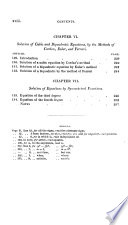 | John Radford Young - 1835 - 302 pages
...necessarily, p=p' and r = t^ ; consequently, when the roots are all real, the number of positive roots will be equal to the number of variations, and the number of negative roots equal to the number of permanencies.' CHAPTER. II. ON THE TRANSFORMATION OF EQUATIONS. (19.) Algebraical... | |
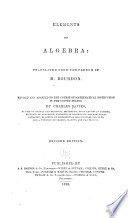 | Algebra - 1838 - 372 pages
...PERMANENCES. 325. Consequence. When the roots of an equation are all real, the number of positive roots is equal to the number of variations, and the number...negative roots is equal to the number of permanences. For, let m denote the degree of the equation, n the number of variations of the signs, p the number... | |
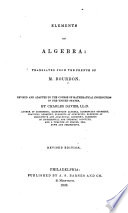 | Charles Davies - Algebra - 1842 - 368 pages
...PERMANENCES. 325. Consequence. When the roots of an equation are all real, the number of positive roots is equal to the number of variations, and the number...negative roots is equal to the number of permanences. For, let m denote the degree of the equation, n the number of variations of the signs, p the number... | |
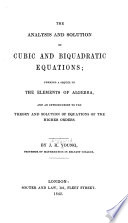 | John Radford Young - Equations - 1842 - 276 pages
...and » = »' Consequently, when the roots are all real, the number of positive roots will be exactly equal to the number of variations, and the number of negative roots to the number of permanencies. It must be borne in mind, however, that whether the roots are all real... | |
 | Charles Davies - Algebra - 1845 - 382 pages
...PERMANENCES. Consequence. 328. When the roots of an equation are all real, the number of positive roots is equal to the number of variations, and the number of negative roots to , the number of permanences. For, let m denote the degree of the equation, n the number of variations... | |
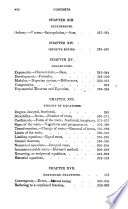 | Stephen Chase - Algebra - 1849 - 348 pages
...362). Therefore, Cor. i. If the roots of an equation be all real, the number of positive roots must be equal to the number of variations ; and the number of negative roots, to the number of permanences. See § 218. 1, 2, 3. § 362. J.) If any term of the equation be wanting,... | |
 | Joseph Ray - Algebra - 1852 - 408 pages
...ciphers). Therefore, if the roots of an equation be alt real, the number of positive roots must be equal to the number of variations, and the number of negative roots to the number of permanences. (See examples, pages 343, 345.) For example, the equation 0:2+16=0, may... | |
 | Charles Davies, William Guy Peck - Electronic book - 1855 - 592 pages
...roots is equal to the number of vari- \ye 8пац fin¿tm accordance with the rule, ations of sign, and the number of negative roots is equal to the number of permanences Л rarialiou is a change of sign in passing along the equation ; a permanence is when two consecutive... | |
| |